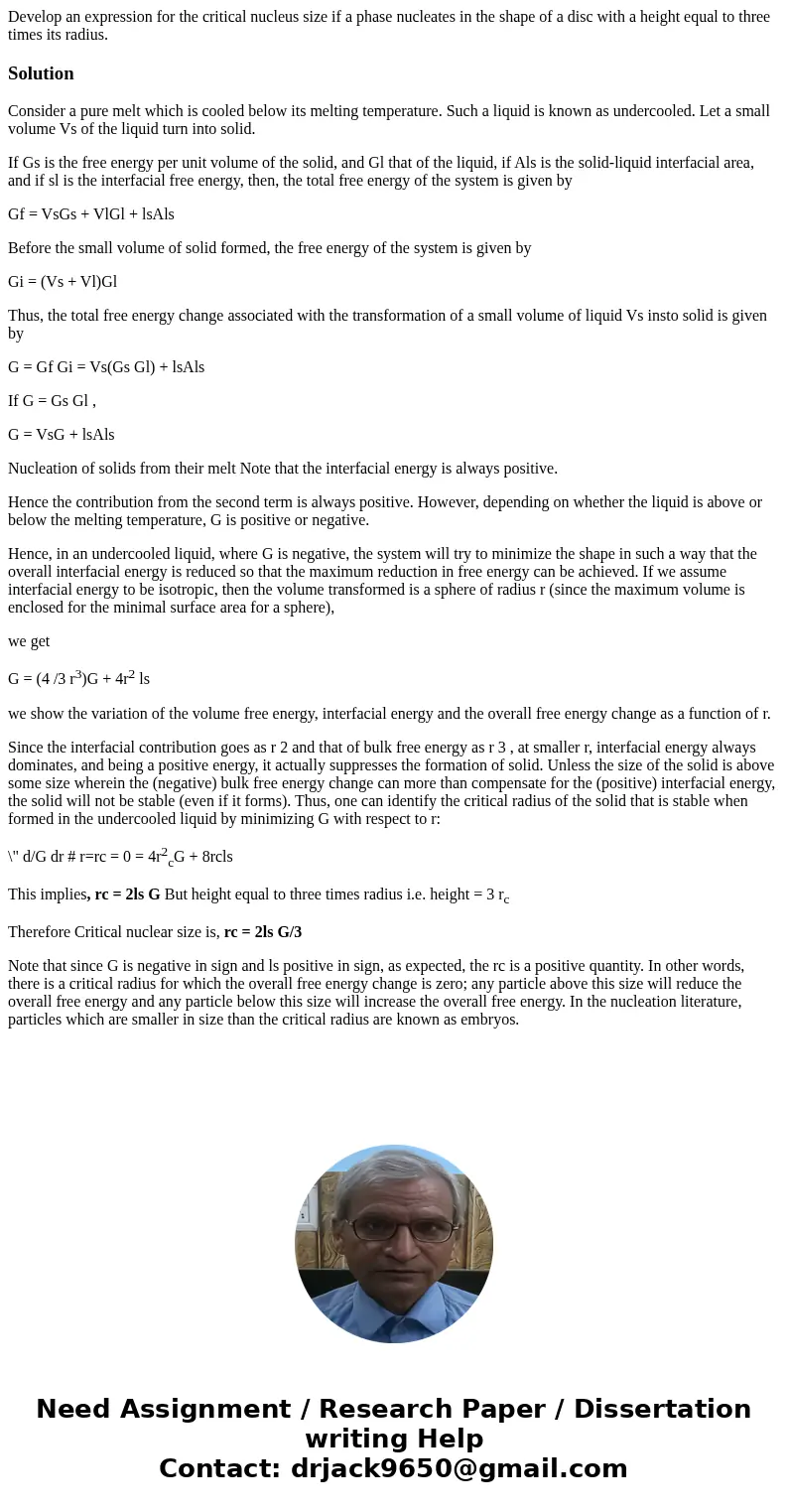Develop an expression for the critical nucleus size if a pha
Develop an expression for the critical nucleus size if a phase nucleates in the shape of a disc with a height equal to three times its radius.
Solution
Consider a pure melt which is cooled below its melting temperature. Such a liquid is known as undercooled. Let a small volume Vs of the liquid turn into solid.
If Gs is the free energy per unit volume of the solid, and Gl that of the liquid, if Als is the solid-liquid interfacial area, and if sl is the interfacial free energy, then, the total free energy of the system is given by
Gf = VsGs + VlGl + lsAls
Before the small volume of solid formed, the free energy of the system is given by
Gi = (Vs + Vl)Gl
Thus, the total free energy change associated with the transformation of a small volume of liquid Vs insto solid is given by
G = Gf Gi = Vs(Gs Gl) + lsAls
If G = Gs Gl ,
G = VsG + lsAls
Nucleation of solids from their melt Note that the interfacial energy is always positive.
Hence the contribution from the second term is always positive. However, depending on whether the liquid is above or below the melting temperature, G is positive or negative.
Hence, in an undercooled liquid, where G is negative, the system will try to minimize the shape in such a way that the overall interfacial energy is reduced so that the maximum reduction in free energy can be achieved. If we assume interfacial energy to be isotropic, then the volume transformed is a sphere of radius r (since the maximum volume is enclosed for the minimal surface area for a sphere),
we get
G = (4 /3 r3)G + 4r2 ls
we show the variation of the volume free energy, interfacial energy and the overall free energy change as a function of r.
Since the interfacial contribution goes as r 2 and that of bulk free energy as r 3 , at smaller r, interfacial energy always dominates, and being a positive energy, it actually suppresses the formation of solid. Unless the size of the solid is above some size wherein the (negative) bulk free energy change can more than compensate for the (positive) interfacial energy, the solid will not be stable (even if it forms). Thus, one can identify the critical radius of the solid that is stable when formed in the undercooled liquid by minimizing G with respect to r:
\" d/G dr # r=rc = 0 = 4r2cG + 8rcls
This implies, rc = 2ls G But height equal to three times radius i.e. height = 3 rc
Therefore Critical nuclear size is, rc = 2ls G/3
Note that since G is negative in sign and ls positive in sign, as expected, the rc is a positive quantity. In other words, there is a critical radius for which the overall free energy change is zero; any particle above this size will reduce the overall free energy and any particle below this size will increase the overall free energy. In the nucleation literature, particles which are smaller in size than the critical radius are known as embryos.

 Homework Sourse
Homework Sourse